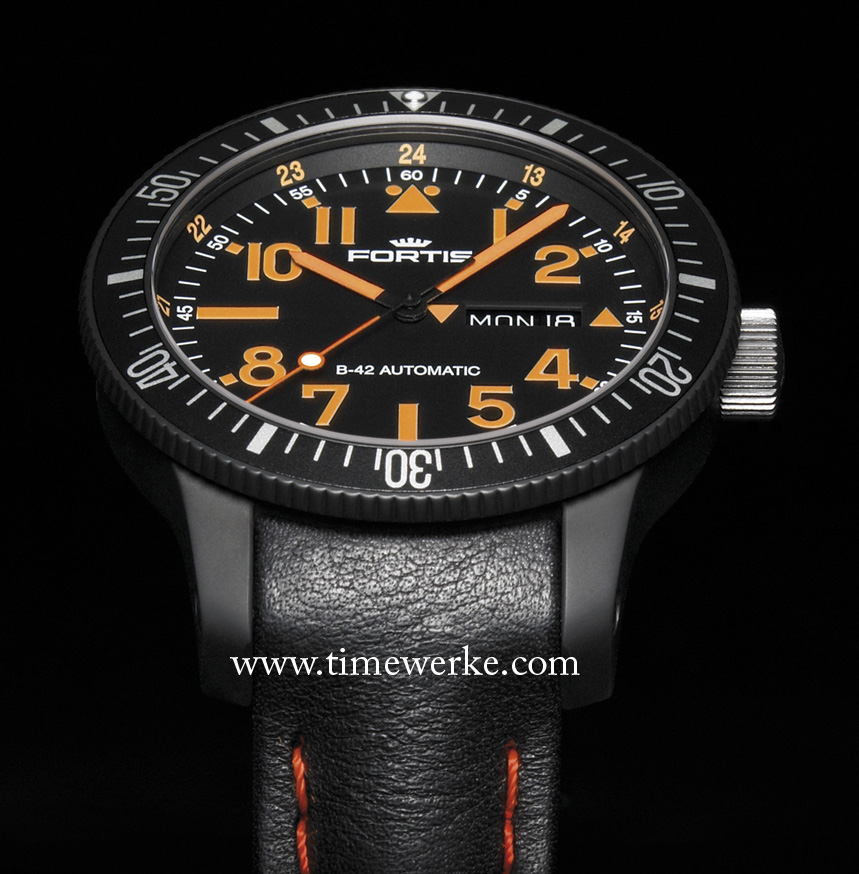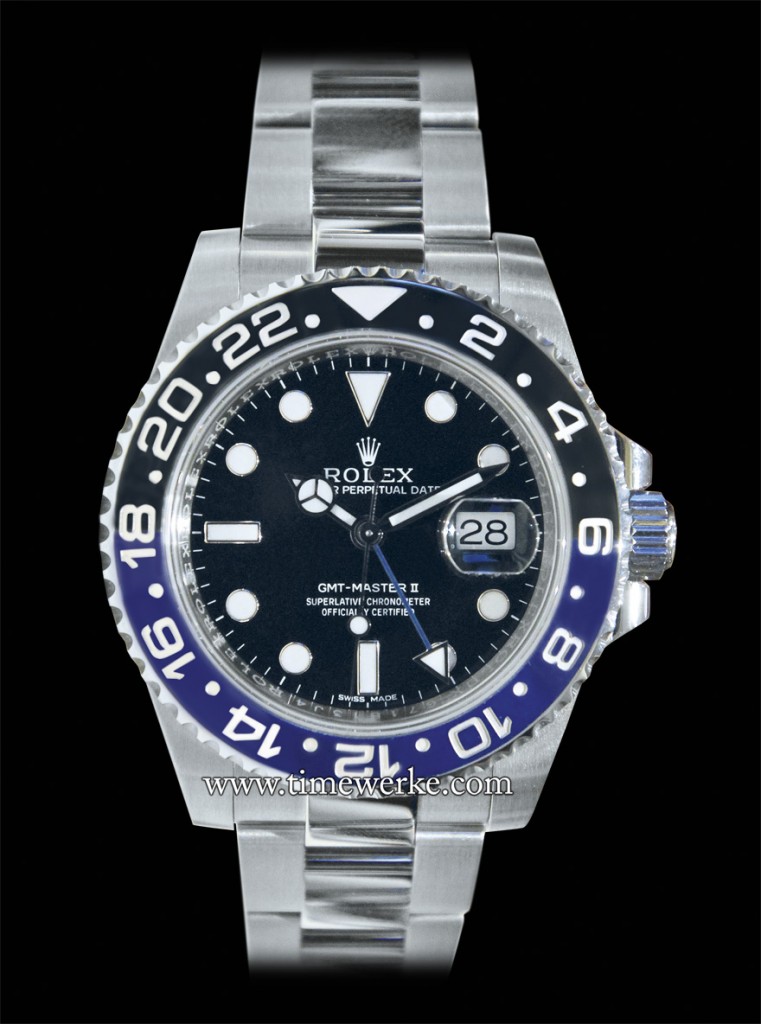
The Fortis B-42 Black Mars 500, introduced in 2010, is the same model issued to the crew of six “cosmonauts” who participated in the 520-day experiment simulating a long-haul flight to Mars. Photo: © Fortis
The B-42 Black Mars 500 from Fortis, introduced in 2010, features what the brand describes as “SuperLuminova orange” on the Arabic numerals and rectangular hour indices. (Do note however, that in darkness, the afterglow is the typical green.)
Even the accompanying leather strap with orange stitching complements the watch.
The Fortis B-42 Black Mars 500 marked the brand’s participation in the 520-day Mars 500 flight simulation, a project undertaken by the European Space Agency (ESA) and the Russian space agency (ROSCOSMOS) to study the effects of long-haul human space travel.
Each of the six “cosmonauts” who were voluntarily “locked up”, spending almost 18 months in windowless modules were not only issued with the Fortis B-42 Black Mars 500, it was also reported that the majority, if not all, of these “cosmonauts” or crew members also received US$100,000 as a reward for their participation after they emerged from their “confinement” in November 2011.
The question is, why is orange used in the Fortis B-42 Black Mars 500 and not red? After all, Mars is also known as the ‘red planet’ because of the iron oxide or “rust” on its surface.
Well, if you consider the images of Mars, the planet can be seen in either red or orange. In fact, NASA (National Aeronautics and Space Administration) describes the planet as having regular seasonal orange dust storms.
Moreover, orange does go well with the black PVD titanium case, offering a nice contrast of colours to this sporty and “space-worthy” timepiece.
Another Fortis article from timewerke.com which may be of interest: Fortis Colors

